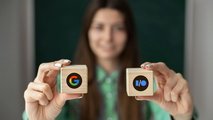GPT-4 (generative pre-trained transformer 4) is a large multimodal language model created by OpenAI and the fourth in its GPT series.
An updated version of the company's previous language models, GPT-4, was released on March 14, 2023, and can process both image and text inputs to generate complex responses like human speech.
GPT-4 is already making waves on the Internet, but what started this ripple effect?
In this article, we will discuss the history of GPT, the meteoric rise of GPT-3 that attracted over 100 million users at launch, and how GPT-4 is just the start of AI changing our lives as we know it.
History of GPT
The AI revolution for natural language was only made possible with transformer models, beginning with Google's BERT in 2017.
Before this, other deep learning models like long short-term memory neural networks (LSTMs) and recursive neural networks (RNNs) were used for text generation. However, they needed help with generating longer content that sounded realistic.
GPT-1
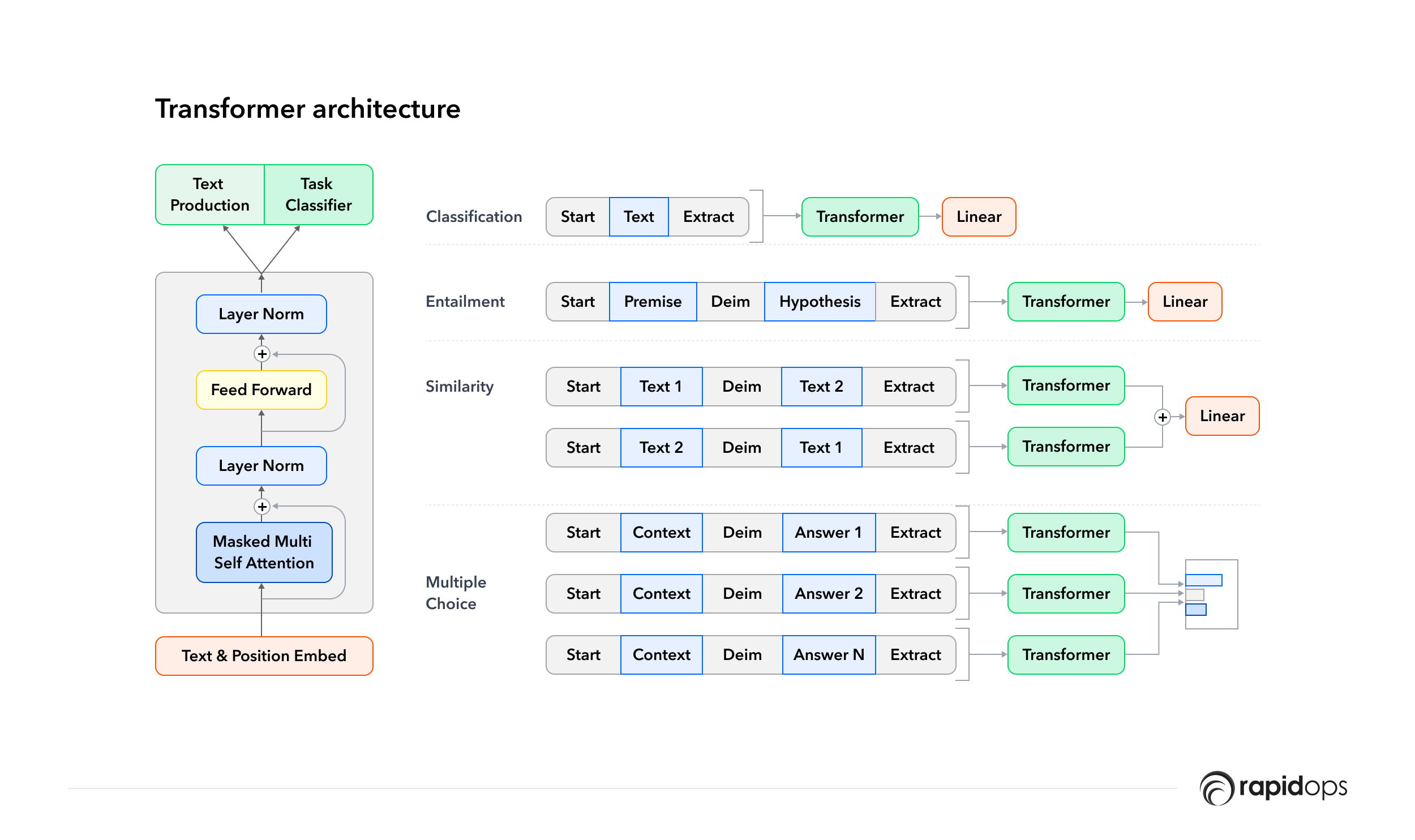
In 2018, OpenAI released a paper titled "Improving Language Understanding by Generative Pre-Training," which introduced its GPT-1 language model.
Although the model was a proof-of-concept and not publicly released, it showcased the potential of natural language processing with generative pre-training.
GPT-2
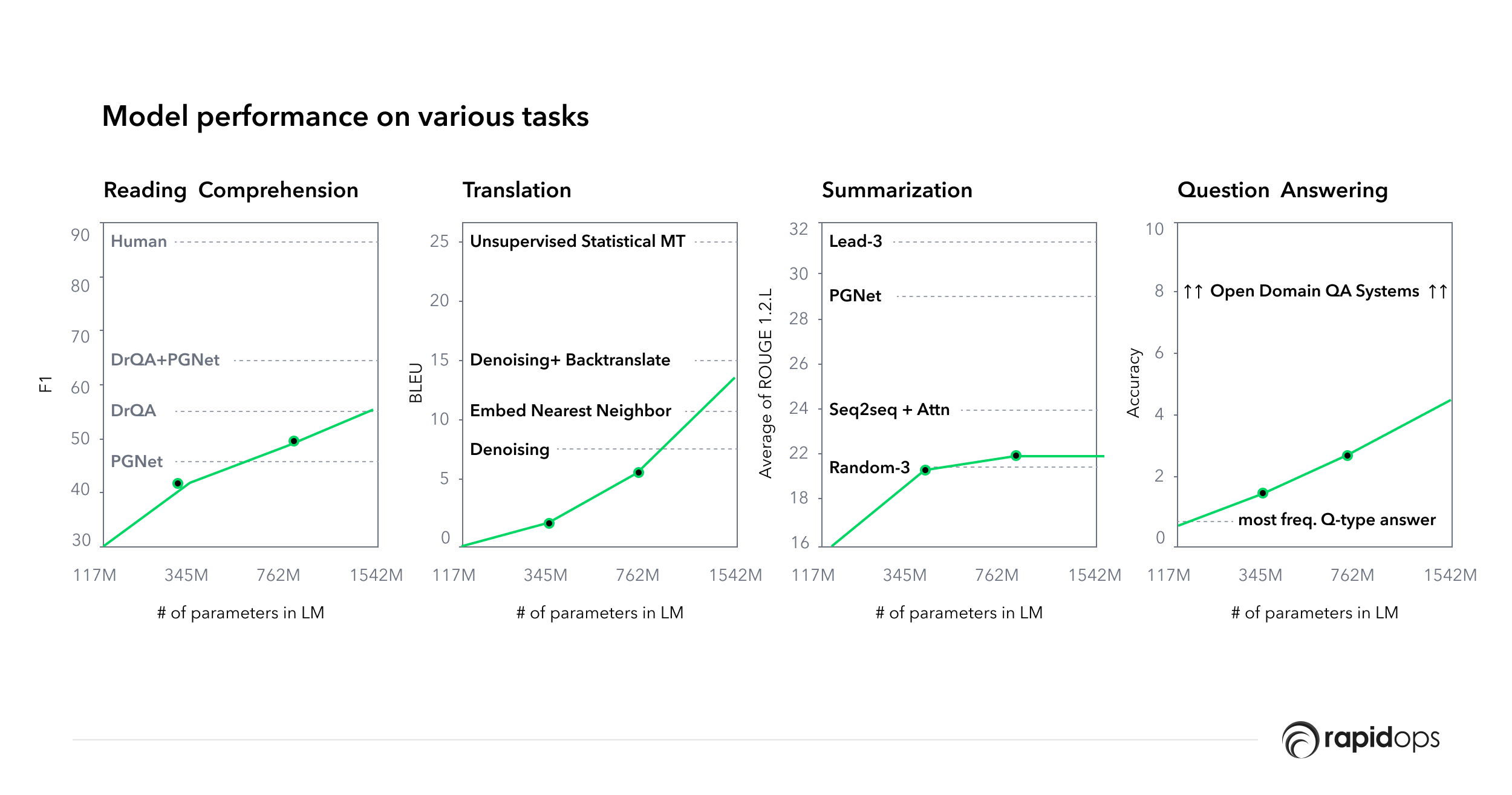
The following year, OpenAI introduced its GPT-2 model in a paper titled "Language Models are Unsupervised Multitask Learners." The model was made publicly available to the machine-learning community and was found to be adequate for various text-generation tasks.
Although the model could generate a few sentences before breaking down, it was considered state-of-the-art in 2019.
GPT-3
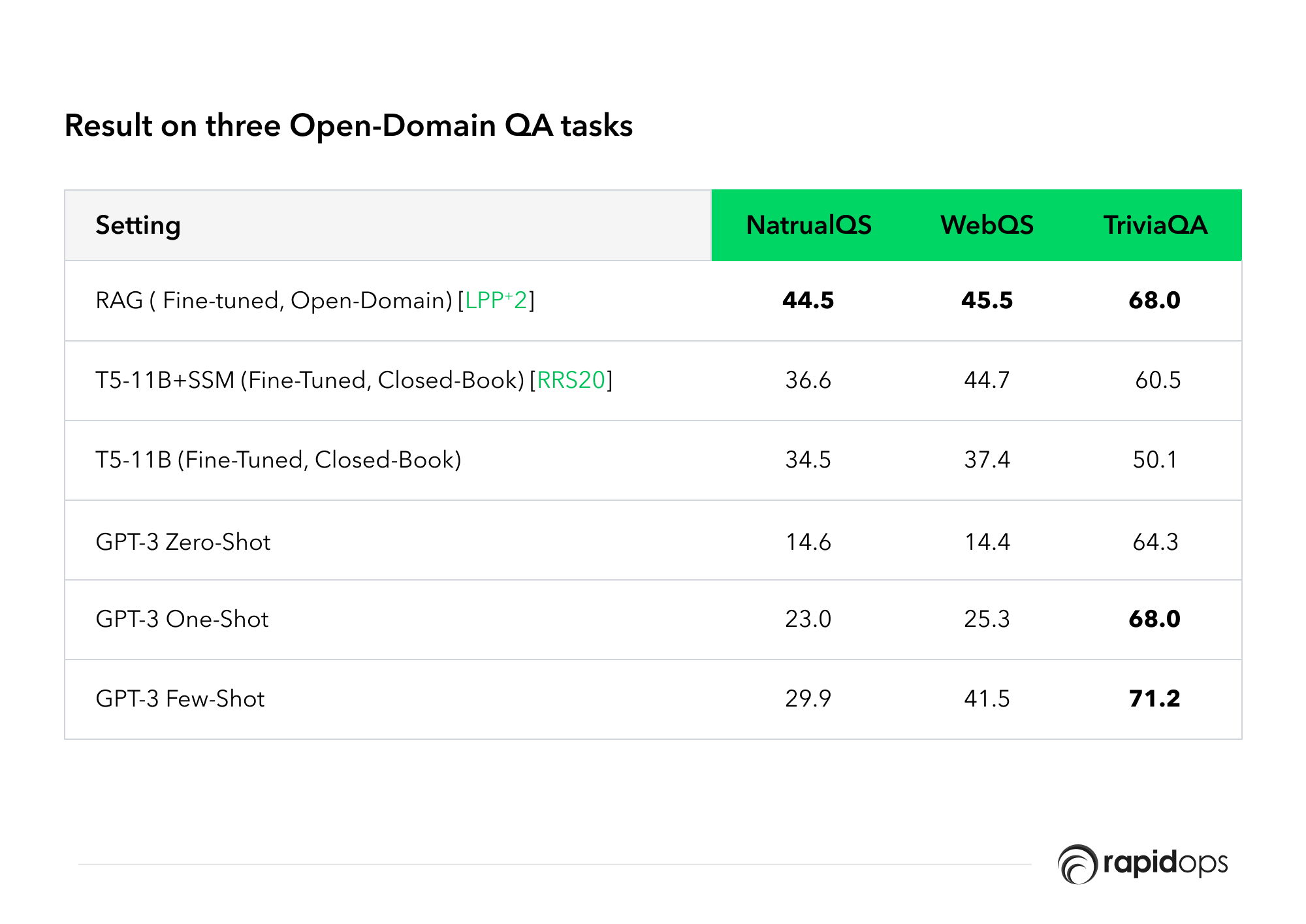
In 2020, OpenAI released another paper titled "Language Models are Few-Shot Learners," which introduced the world to the GPT-3 model. With 100 times more parameters than GPT-2 and trained on an even larger text dataset, GPT-3 achieved better performance than its predecessor.
OpenAI continued to refine the model, releasing various iterations under the GPT-3.5 series, including the conversation-focused ChatGPT.
ChatGPT surprised the world with its ability to generate human-like text, making it the fastest-growing web application ever, reaching 100 million users in just two months.
In addition, the GPT-3 model has ushered in a new era of natural language processing, with many businesses and industries now exploring its potential.
A breakthrough occurred with BERT's transformer approach since it did not need an expensive annotated dataset to train it.
Instead of relying on supervised learning techniques, BERT was used by Google to interpret natural language searches. However, it was incapable of generating text from a prompt. Check out the top alternatives to ChatGPT, an interesting list of dark horses.
GPT-4 capabilities
With the introduction of GPT-4, OpenAI has implemented many exciting new features and updates that make it superior to GPT-3 and its other past language models. Overall, the most significant improvement includes:
1. Enhanced comprehension and context understanding
GPT-4 has significantly improved its ability to understand and process the context and information in a conversation. This has led to more accurate, contextually relevant responses and a more cohesive and natural conversation flow.
2. Advanced reasoning and problem-solving skills
With its increased processing power, GPT-4 can handle more complex problem-solving tasks by better understanding the underlying logic and concepts. This has enabled it to provide more accurate, detailed, and helpful solutions to problems or questions in various fields, such as mathematics, science, and technology.
3. Improved language support and translation
GPT-4 now offers enhanced support for a broader range of languages, including a better understanding of idiomatic expressions, cultural nuances, and more accurate translations. This will make it more versatile and functional for users from diverse linguistic backgrounds.
4. Futuristic image reading and processing capability
GPT-4 can recognize and process text from images, such as optical character recognition (OCR) systems. GPT-4 has incorporated this capability to capture information from the image and not just text as it did from GPT-3.
Pointers that distinguish GPT-4 from the predecessors
- GPT-4 differs from previous versions in several ways. One of the most significant differences is that GPT-4 is a multimodal model that can handle text and images, while earlier versions were limited to text inputs.
- GPT-4 has been trained with 100 trillion parameters, significantly more than the 175 billion parameters used to train GPT-3.
- GPT-4 is more of a data-to-text model than a text-to-text model like ChatGPT-3.5. It can process and respond to visual inputs, such as sketches of websites, and generate the code required to produce such websites.
- OpenAI has spent the past two years rebuilding its entire deep learning stack and co-designed a supercomputer with Azure specifically for its workload.
- OpenAI has developed a tool called Evals that helps evaluate the performance of models like GPT-4. Evals enables developers to use datasets to create prompts, measure the quality of responses provided by OpenAI models, and compare performance across different datasets and models. This tool helps ensure the models perform optimally and can be evaluated consistently.
- OpenAI Evals, an open-source framework for automated evaluation of AI model performance, enables people to report model shortcomings and guide further improvements.
- GPT-4 outperforms its predecessors at tasks that require reasoning and problem-solving.
- Most current machine learning benchmarks are only in English, so OpenAI tested their GPT-4 model's performance in other languages. They translated the MMLU (Multiple-choice questions in 57 subjects (professional & academic)) benchmark, which includes 14,000 multiple-choice questions from 57 topics, into multiple languages using Azure Translate. GPT-4 performed better than GPT-3.5 and other language learning models (Chinchilla and PaLM) in 24 out of 26 languages tested, even for low-resource languages like Latvian, Welsh, and Swahili.
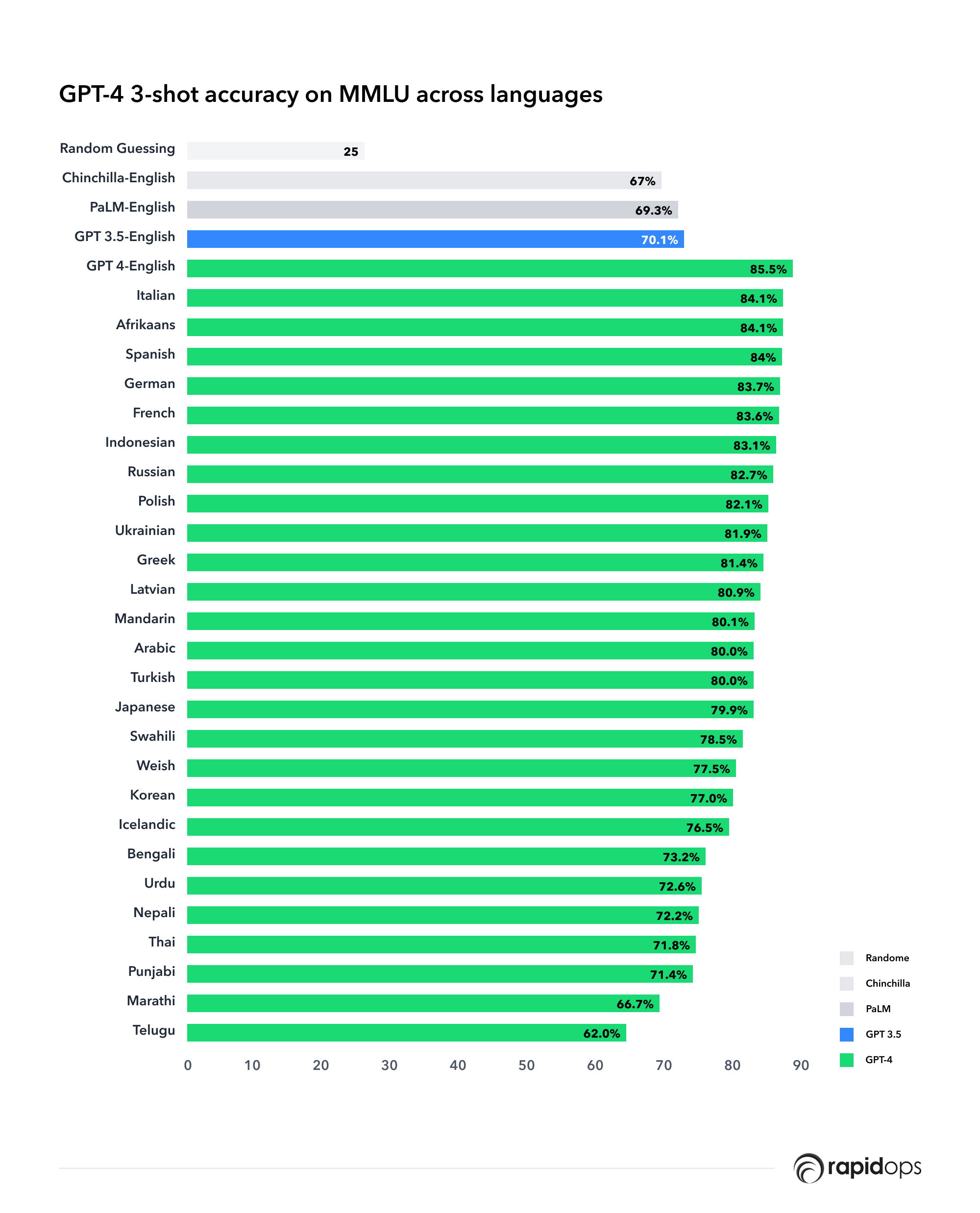
- According to the official documentation of GPT-4 by OpenAI, GPT-4 scores 40% higher than their latest GPT-3.5 on their internal adversarial factuality evaluations.
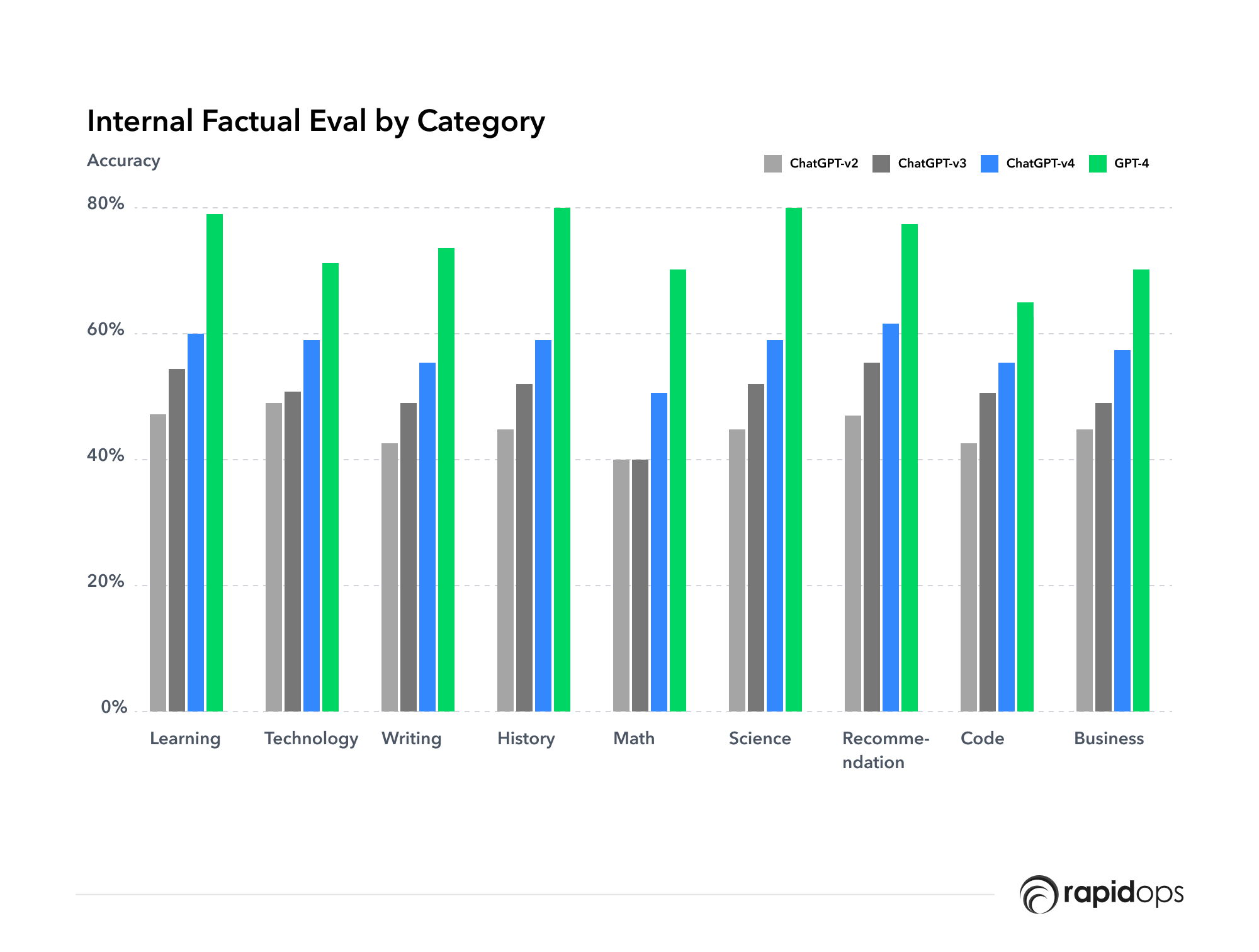
- TruthfulQA is a benchmark designed to evaluate the accuracy and truthfulness of language models in generating answers to questions. This benchmark consists of a total of 817 questions that cover 38 different categories, such as health, law, finance, and politics. It aims to measure how well a language model can respond truthfully to various questions across various domains.
- OpenAI has been improving its performance on external benchmarks, including TruthfulQA. This benchmark evaluates a language model's ability to distinguish facts from a set of deliberately false statements accurately. The questions are paired with intentionally incorrect answers designed to be statistically appealing to the model, making it more challenging for the model to distinguish the correct answer from the false ones.
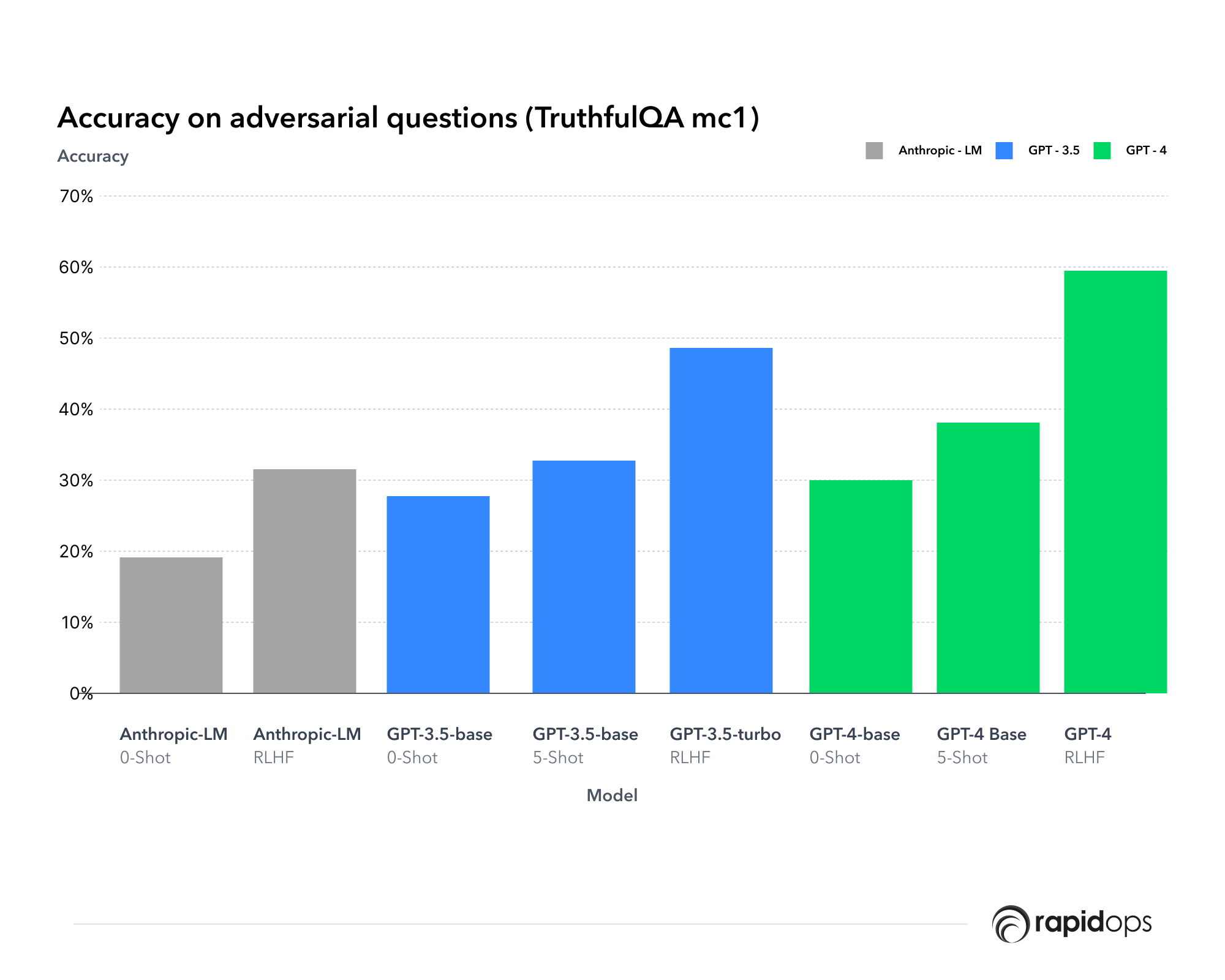
Difference between GPT-3 and GPT-4
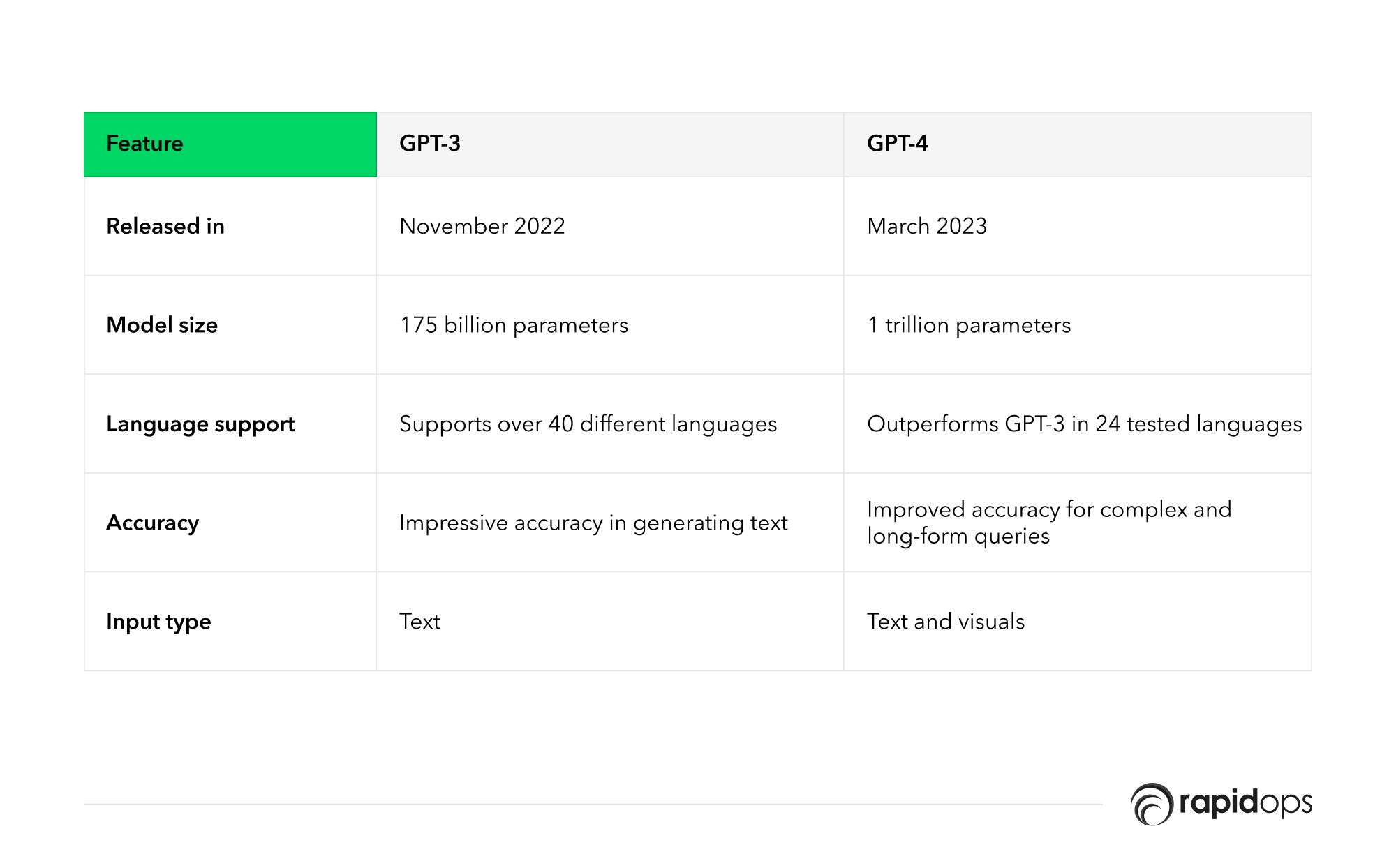
Companies using GPT-4 for advanced and accurate operations
Following the popularization of GPT-3, some companies have already started using GPT-4 for operational efficiencies, such as:
1. Duolingo
The popular language learning app has introduced two new features, Role Play and Explain my Answer, for its subscribers of, Duolingo Max.
Based on GPT-4, these features enable users to practice conversation skills in different scenarios with AI-based characters that provide suggestions and feedback to enhance their language proficiency.
2. Be My Eyes
Be My Eyes, a Danish startup focused on building technology for people with low or no vision, has developed a Virtual Volunteer feature in their app using GPT-4's visual input capabilities.
The AI volunteer offers a level of understanding and context similar to a human volunteer, enabling users to receive assistance in performing daily life tasks.
3. Morgan Stanley
This wealth management company uses GPT-4 to create an internal-facing chatbot that searches through thousands of pages of insights on investment strategies, market research, and commentary to locate relevant information.
The chatbot, which will be available to every advisor, is like having every international analyst on call for investment-related queries.
Jeff McMillan, heading the initiative, describes the chatbot as a game-changer for the company.
4. Bing AI
Microsoft has recently confirmed that their search engine Bing is running on OpenAI's GPT-4. Bing AI, launched in February 2023, is powered by a proprietary AI model called Prometheus, with little information about its mechanism.
As OpenAI continues to update and improve GPT-4, Microsoft plans to incorporate it into Bing AI. This move highlights the importance of AI technology in developing and enhancing search engines and its potential for future advancements in the field.
Closing lines
With the release of GPT-4, the future is here. And while that may seem overwhelming and a bit scary, embracing innovations and advanced technologies can be a game changer for your industry when leveraged the right way.
Need help navigating the world of transformative models for your business? We think we can be of help. Let’s discuss!

Niyati Madhvani
A flamboyant, hazel-eyed lady, Niyati loves learning new dynamics around marketing and sales. She specializes in building relationships with people through her conversational and writing skills. When she is not thinking about the next content campaign, you'll find her traveling and dwelling in books of any genre!

Let’s build the next big thing!
Share your ideas and vision with us to explore your digital opportunities
Similar Stories
- AI
- 4 Mins
- September 2022

- AI
- 9 Mins
- January 2023


Receive articles like this in your mailbox
Sign up to get weekly insights & inspiration in your inbox.

